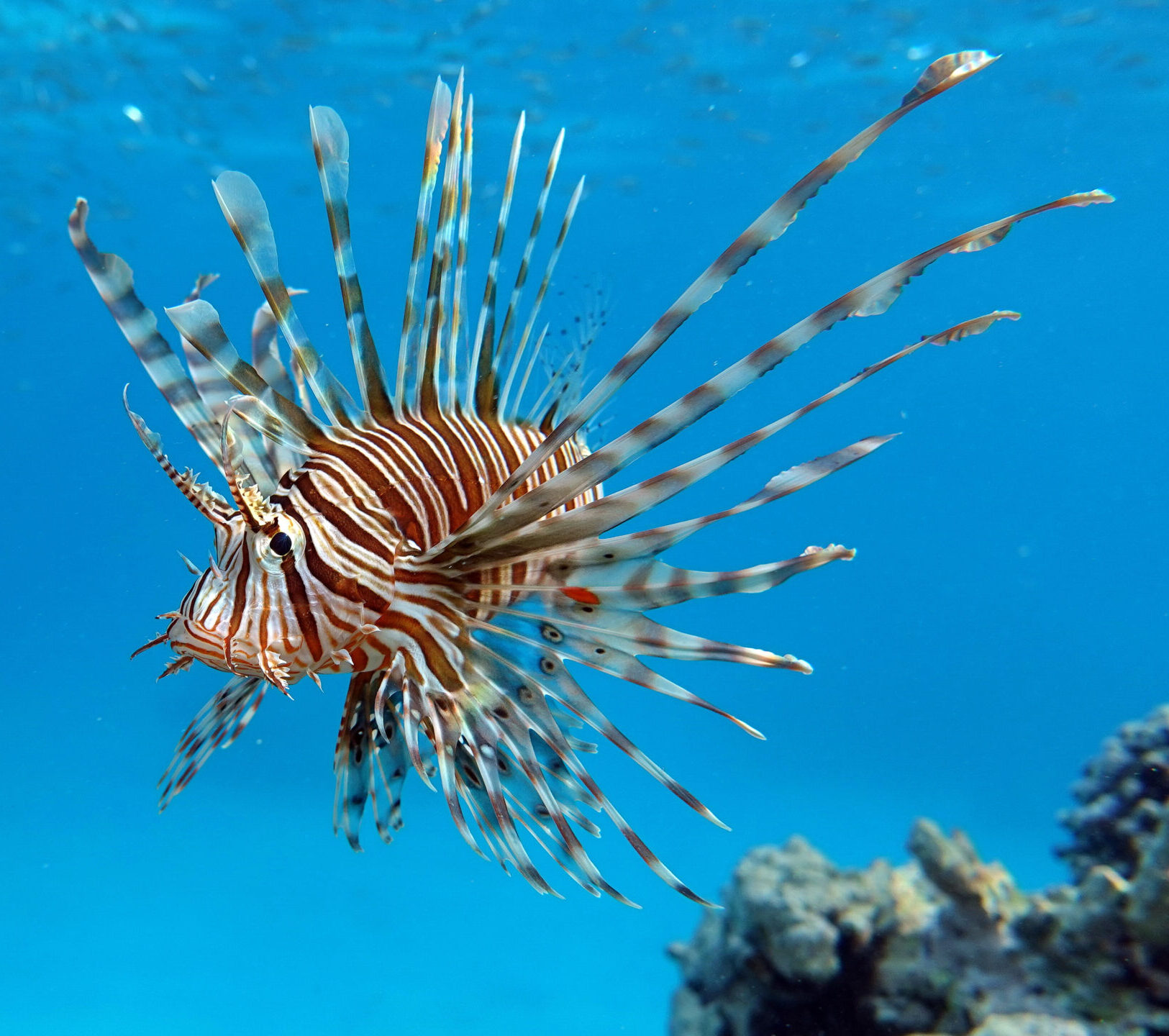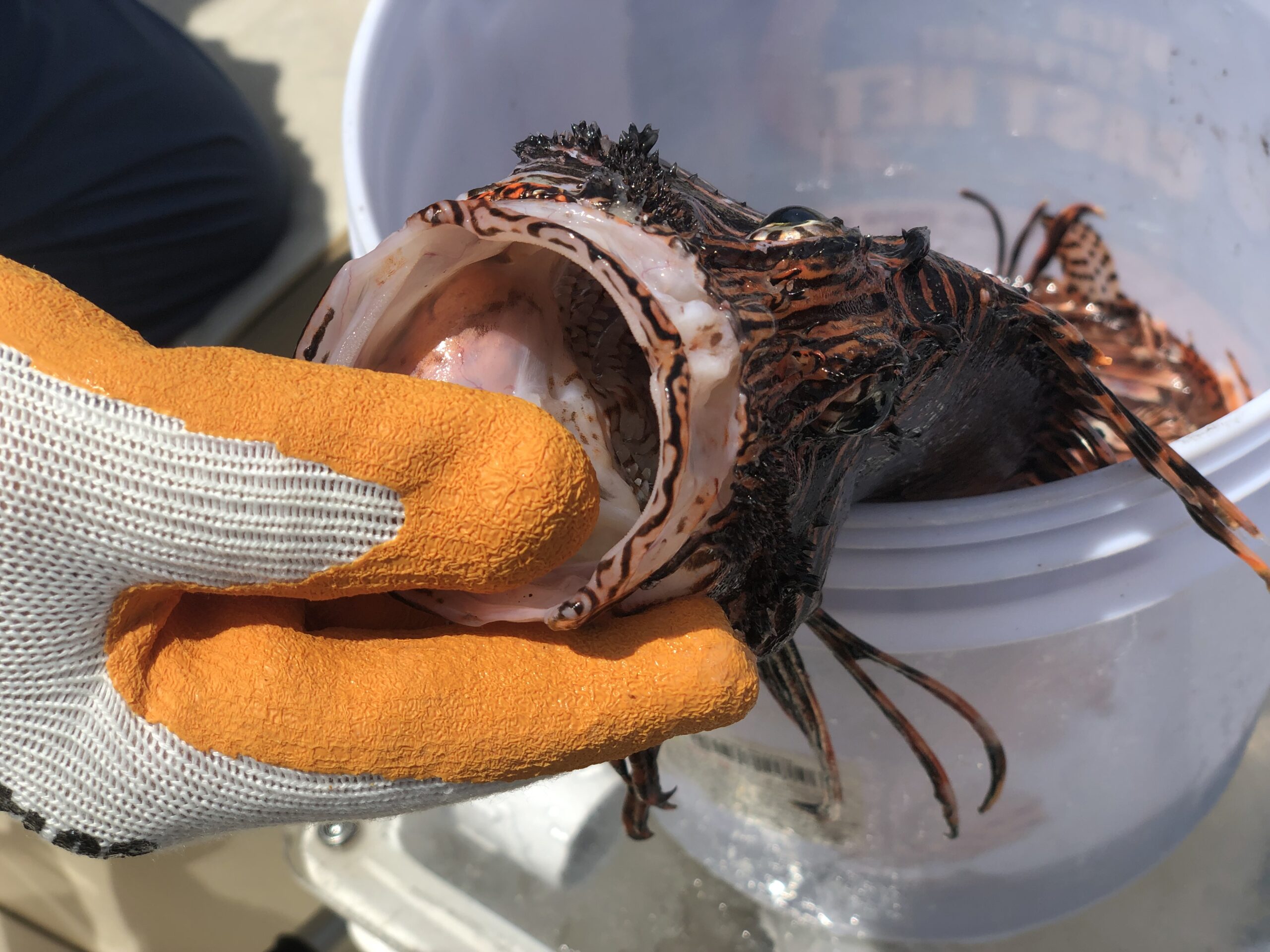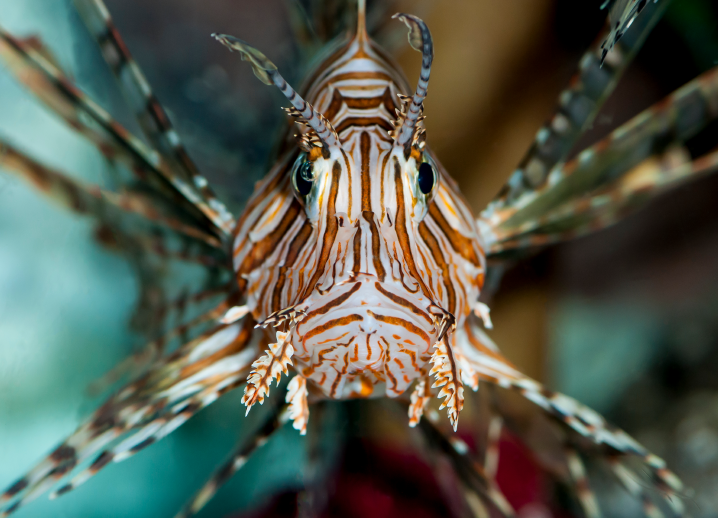Ah, the lionfish… beautiful, stealthy and always with a few (venomous) tricks up their spines. An invasive species, lionfish have been found wreaking havoc in waters where they wouldn’t normally live — like off the coast of South Carolina. In fact, these marine invaders are causing so much ecological harm, they’re throwing off the balance of our ocean’s ecosystems.
So, we’ve established that they’re an invasive species… but exactly how? And what else makes the lionfish so unique? We’ve gathered a few interesting tidbits to help round out your knowledge of lionfish and further explain why this species has such a negative impact.
It’s Me, Hi, I’m the Problem, It’s Me
Sorry, lionfish, but it’s true. While this species is native to the tropical waters of the South Pacific and Indian Oceans (anywhere from 4,000–11,500 miles away from Charleston), lionfish are now found along the East Coast, the Gulf of Mexico and the Caribbean Sea. Experts speculate lionfish initially landed in the Atlantic Ocean in the early 1990s, when Hurricane Andrew shattered an aquarium tank in Florida. This incident, coupled with how quickly lionfish reproduce, spurred a lionfish invasion.
 LIonfish are invasive in the Atlantic Ocean.
LIonfish are invasive in the Atlantic Ocean.Lots of Bébés
That’s right, lionfish populations flourish because of their reproduction rate and frequency. On average, one female lionfish can lay three million eggs or more in one season; this breaks down to between 15,000–50,000 eggs every three to four days! As if this wasn’t enough, warmer water temperatures can increase the number of eggs laid. And, of course, lionfish tend to favor warmer waters, such as seagrass beds, mangroves and artificial and natural reefs.
It’s All in the Coloration
It’s not just their reproductive rate that makes them formidable, it’s their unique physicality too! As we mentioned earlier, lionfish were a popular addition to home aquariums, likely due to their ornamental appearance. The iridescent, reddish-orange stripes adorning their bodies and decorative fins make them super eye catching… except on the ocean floor. As we descend down the water column, red is the first color to disappear — so, the deeper lionfish dive, the less visible they are to their prey! They also get the upper fin in shallower waters, as their patterns and coloration help them blend into rock and reef formations.
 A diver showcases the extended mouth of a culled lionfish.
A diver showcases the extended mouth of a culled lionfish.That’s a Mouthful
Lionfish seem to have a never-ending appetite, with the body adaptations to match! This species is big on enlarging themselves to eat as much as possible; their stomachs can expand up to 30 times their normal size, and their mouths can expand to more than half of their own body length! Basically, their bodies are made to take in as much food as possible — talk about your opportunistic eaters!
Don’t Touch the Butt!
Well, in this case, don’t touch the spines! Lionfish have 18 venomous spines all over their bodies that contain venom, essentially acting as a defense system for the lionfish. There are 13 venomous spines located at the front of the dorsal fin, two spines at the front edge of each pelvic fin and one spine at the front edge of the anal fin. Don’t worry though — their venom is contained in the spines themselves, leaving the body (or meat) safe from causing harm if you come into contact with it… or choose to add it to your plate!
What’s On the Menu
Speaking of meat… lionfish might be considered the most sustainable seafood option along the eastern seaboard, since they don’t belong in our waters in the first place! There’s no concern of depleting their populations by devouring them ourselves. Lionfish are flaky, buttery and full of flavor. Many chefs work hard to get their hands on lionfish to serve them up as specials, and diners have caught on to their delicious taste and texture, too! Divers have even been recruited to help cull lionfish for local restaurants, grocery stores and purveyors to sell. So, next time you’re out at your local restaurant, don’t forget to ask if there’s a lionfish special!
 A lionfish dish served at last year's JuLionfish Festival.
A lionfish dish served at last year's JuLionfish Festival.Balancing the Scales
Though their demand is increasing on the culinary scene, efforts to procure lionfish can be a bit convoluted. You see, lionfish can’t just be caught on hook and line or with nets; divers need spears, gloves and specialized Zookeeper tubes to contain the lionfish one-by-one before bringing them up to the surface. Since lionfish have no natural predators in our waters, they don’t react much to being approached by a diver, which makes for an easy, albeit individualized, approach!
 Divers display their 2022 JuLionfish Derby success.
Divers display their 2022 JuLionfish Derby success.With all that said, there’s nothing like a little healthy competition for the good of marine conservation, right? In fact, divers have turned lionfish culling efforts into annual competitions, known as derbies. Divers register to remove as many invasive lionfish during a given period, with numerous awards up for grabs. Our own annual JuLionfish Derby + Festival began in 2022, where divers culled 137 lionfish, making an impressive collective impact. Since one lionfish consumes about 5,000 prey fish annually, this equates to 685,000 native fish spared from the throes of lionfish.
Back for another year of competition, the JuLionfish Derby is well underway, with the JuLionfish Festival just around the corner on July 28! Come on out to celebrate the collective efforts of divers, enjoy live entertainment on the waterfront and taste lionfish for yourself!
Published June 30, 2023


